“I am in favor of shutting down all the faculties, all the universities, all the schools, deeply starting at zero. “It’s the deep spirit of destroy, she said. I am in favor to forget the history, the history of France, the history of the world, completely, that there is no longer any memory of what has been lived. The intolerable, on all fronts, on all points. break all. In “destroy”, I try to situate the change of human, the revolutionary stage, at the level of the inner life. I believe that if we do not do this step, interior, if the human does not change, in it’s loneliness, nothing is possible, all the revolutions will be rigged. This I believe it deeply.”
(Marguerite Duras, 30st of november 1969)
I once destroyed a work of art, in the most horrible situation you can imagine.
It was like in a movie but regrettably it was real.
I was in a museum, and there the work stood on a pedestal. (a shaky one as it turned out.)
I didn’t notice the artwork at all at first and that was exactly the problem. Because I was looking at a work that stood on a nearby pedestal.
On it lay an open book with ingeniously cut and folded pages that were standing on top of the pages, creating a kind of fold-out world coming out of the book. I stood there admiring the delicate work and wanted to take a picture of it.
To get a good picture, I took a few steps back while looking at the camera of my phone.
And then it happened. The pedestal behind me tipped over excruciatingly slowly. And the statue on it slid off the pedestal in slow motion, it seemed.
It seemed to be going so slowly that I still had hours to look at what I was going to destroy.
Of course that wasn’t the case. In real life it was just a few seconds. I have noticed before, and heard from others, that in a moment of crisis time seems to stretch out.
Like in the film speed, in which the entire world has to be saved in a stressful minute and a half, which we then see happening in an hour and a half of film.
But it is a deceptive phenomenon because it seems as if you still have time to intervene to prevent the tragedy. But that is not the case at all. In real life, the statue shattered into hundreds of pieces in a nano second.
It was a messy ceramic octopus.
I stood there looking in horror at the pile of misery.
And not just me. The whole room looked at me.
Oh horror!
First, a frantic gallery owner dressed in an artistic garb arrived, who immediately demanded my details for the insurance. I guiltily stammered some unclear words. Then the director arrived in a sharp suit and with crispy curls. He pushed me to the coffee bar in a reassuring manner and said, “Go and have a cup of coffee there, you don’t have to hand over anything right now.”
“Where is the artist!?” the gallerist exclaimed in panic. And she strode across the room through the staring crowd.
A strange old ‘girl’ entered with brightly colored tights and lots of messy hair.
She was nervous but not panicked like the gallerist.
The three characters stood around watching the accident.
And the audience stood at a silent and respectful distance.
And thank goodness I could watch the situation from the safety of my bar.
The artist with colored tights walked around it, looking at it from all sides.
And finally said, “I suggest we leave it exactly as it is!”
“Well…” said the director hesitantly.
“Yes!” Said the artist “This is what happened to it now. It has transformed into this and it actually looks good. it’s landed perfectly.”
The gallerist stood looking with a muzzle that was somewhere between horror and perplexity.
“I’m afraid that won’t work,” said the director.
Only now did the artist look truly disappointed.
I found out a lot of things that day.
The gallerist’s panic betrayed the enormous responsibility she felt. And that was actually beautiful. But the museum took the blame and said that they should never have left a loose pedestal with a loose work on it standing like that. And that was even better (for me) because I was released from the blame.
But the artist!
The artist was immediately prepared to adapt to the new situation and to work with the surprise that had arisen.
I felt a deep respect.
And I realized the separateness of the four worlds that came together here. The maker, the audience, the stage and the person who has to make money from it.
Artists have no difficulty at all in parting with their work. They already said goodbye to it when the work was released from under their hands and was declared ‘finished’.
At that moment the work no longer belongs to the artist.
The work has become the public’s.
And it is again up for interpretation when exposed.
Raising new questions and inviting new insights.
The interest of the artist is hereby served.
To attract an extra audience, which is especially important for sellers and museums, works of art are placed on plinths and pedestals.
For worship.
One cannot molest a worshiped object.
That is an act of disrespect.
And yet……
some works were created under obscure circumstances.
Some clients had nothing to do with the inner worlds of its creators
Some investors were only in it for the money, the power, the fame.
Some art deserves to be destroyed.
Oh! not this octopus. certainly not!
But think of paintings made by bread painter Rembrandt who earned a lot of money,
had his companions do the work and kept the established order in power and even more confirmed me
But think of paintings made by bread painter Rembrandt who earned a lot of money, had his apprentices do the work and kept the established order in power and confirmed it even more with his works.
I dare to doubt whether we can talk about art.
Shouldn’t art show the ‘other’?
The possibilities and not the established?
Don’t we appreciate the people who made a revolution with their work?
Don’t we appreciate how Hieronymus Bosch hung bizarre creatures in the church instead of holiness?
Or that Breugel suddenly started painting ‘ordinary’ people?
And think of the statues of Saddam, Lenin and Stalin that were taken down.
Symbols of power and oppression.
Now our supposed ‘heroes’ from history are again under pressure.
Just as much they are symbols of power and oppression.
A lot of art represents that, even without you knowing it.
And people are shocked by the idea that the statues of any hero (also known as a murderer or dictator, because all of them, one by one, have the most disgusting things on their score) have to disappear. “Because oh drama! our history! we must not forget it!”
In this story, the usefulness of the idea that ‘we should not forget’ escapes me.
I believe in Marguerite Duras’ statement.
Let us carry these symbols to the grave.
Let us destroy them and forget them.
Let us stop learning lessons from history about how women were ‘once’ (they say) oppressed. It just maintains the idea that this could be an option.
And it only perpetuates an excuse that sexists must come from a different time and that that is the explanation for their behavior.
Let us forget that such times ever existed.
Let us destroy the symbols for all this!
Let us collect and wholeheartedly destroy the works of art (there are already too many of them) that were created under poor conditions and confirm the powers that still hold us.
And you can also throw in some ugly other works on the pyre.
Don’t worry, most artists won’t lose sleep over it!
Sources: kaputomat
Guerrilla girls

 Uno makes Ikebana and Bento boxes.
She combines the two Japanese traditions in an untraditional way by calling them ´edible stories´. Ikebana is a special way of flower arranging in Japan. The very balanced and non-abundant pieces might be difficult to grasp at first for westerners who mainly like to celebrate the colourfulness, the blooming and the abundance of flowers, which resamble mainly spring and new life. The trick with Ikebana, says Uno, is in appreciating all beauty of the plant, not only when its blooming, but the entire process including the dying. She compares this to the way she makes her bento boxes. ¨You have to appreciate what you eat, from the seed to the fruit, to the harvest, untill you digest it.¨
So Uno creates edible Ikebana (flower art pieces) and after enjoying its beauty she eats them. Is it cruel? Or humorous and honest?
Uno makes Ikebana and Bento boxes.
She combines the two Japanese traditions in an untraditional way by calling them ´edible stories´. Ikebana is a special way of flower arranging in Japan. The very balanced and non-abundant pieces might be difficult to grasp at first for westerners who mainly like to celebrate the colourfulness, the blooming and the abundance of flowers, which resamble mainly spring and new life. The trick with Ikebana, says Uno, is in appreciating all beauty of the plant, not only when its blooming, but the entire process including the dying. She compares this to the way she makes her bento boxes. ¨You have to appreciate what you eat, from the seed to the fruit, to the harvest, untill you digest it.¨
So Uno creates edible Ikebana (flower art pieces) and after enjoying its beauty she eats them. Is it cruel? Or humorous and honest?








































 “Around 63.000 people rush themselves every morning in their cars to the highway to join the line and then stand still.
They rush themselves, and go nowhere.
The defenition of a highway is ‘a conflictfree road for fast motorised traffic that doesn’t have to stop or wait at junctions’.
Every morning though, the highway transforms into a gigantic roadblock.
Discription:
‘Traffic Jam!’ is a 4 km long installation that resambles a ‘normal’ morning rushhour in the Netherlands, on scale.
The installation consists out of 80.000 white porcelan cars and lorries like we see them every day driving on the Dutch roads. Or actually standing still on the Dutch roads.
The installation ‘Traffic Jam!’ means to give the audience an insight on the scale of the traffic jam problem the Netherlands has. Where other countries have usually traffic jam problems around the big cities, the Netherlands is practicly all jammed up. Because the cities are so close together, it can happen that the entire route from one to another is filled with still standing cars.
If you want to build an entire morning rushour on, let’s say, a scale of 1:87 (standard scaletrain), you will see a ‘Droste effect’ appearing. The installation itself becomes this long that it has the size of one pretty large jam.
In order to see the whole amount of cars at once there needs to be made a special construction of ‘scaleroads’ that turns and twists around itself and can be connected on walls and ceilings, and should maybe even go out of the building and come in again through the back to fit the 4 kilometers.
The installation will be supported by usefull, interesting or bizarre information about the traffic jam problem. Ranging from the economical loss for employers per traffic jam minute, to irritation by the traffic jam drivers, and from how much money is being made with traffic jam, to how it can deliver the traffic jam drivers a moment of relaxation and time for oneself.
File was shown (in parts) at Art Aalsmeer, Otto and at Boxxshop, Lloyd Hotel, Amsterdam.
“Around 63.000 people rush themselves every morning in their cars to the highway to join the line and then stand still.
They rush themselves, and go nowhere.
The defenition of a highway is ‘a conflictfree road for fast motorised traffic that doesn’t have to stop or wait at junctions’.
Every morning though, the highway transforms into a gigantic roadblock.
Discription:
‘Traffic Jam!’ is a 4 km long installation that resambles a ‘normal’ morning rushhour in the Netherlands, on scale.
The installation consists out of 80.000 white porcelan cars and lorries like we see them every day driving on the Dutch roads. Or actually standing still on the Dutch roads.
The installation ‘Traffic Jam!’ means to give the audience an insight on the scale of the traffic jam problem the Netherlands has. Where other countries have usually traffic jam problems around the big cities, the Netherlands is practicly all jammed up. Because the cities are so close together, it can happen that the entire route from one to another is filled with still standing cars.
If you want to build an entire morning rushour on, let’s say, a scale of 1:87 (standard scaletrain), you will see a ‘Droste effect’ appearing. The installation itself becomes this long that it has the size of one pretty large jam.
In order to see the whole amount of cars at once there needs to be made a special construction of ‘scaleroads’ that turns and twists around itself and can be connected on walls and ceilings, and should maybe even go out of the building and come in again through the back to fit the 4 kilometers.
The installation will be supported by usefull, interesting or bizarre information about the traffic jam problem. Ranging from the economical loss for employers per traffic jam minute, to irritation by the traffic jam drivers, and from how much money is being made with traffic jam, to how it can deliver the traffic jam drivers a moment of relaxation and time for oneself.
File was shown (in parts) at Art Aalsmeer, Otto and at Boxxshop, Lloyd Hotel, Amsterdam.
























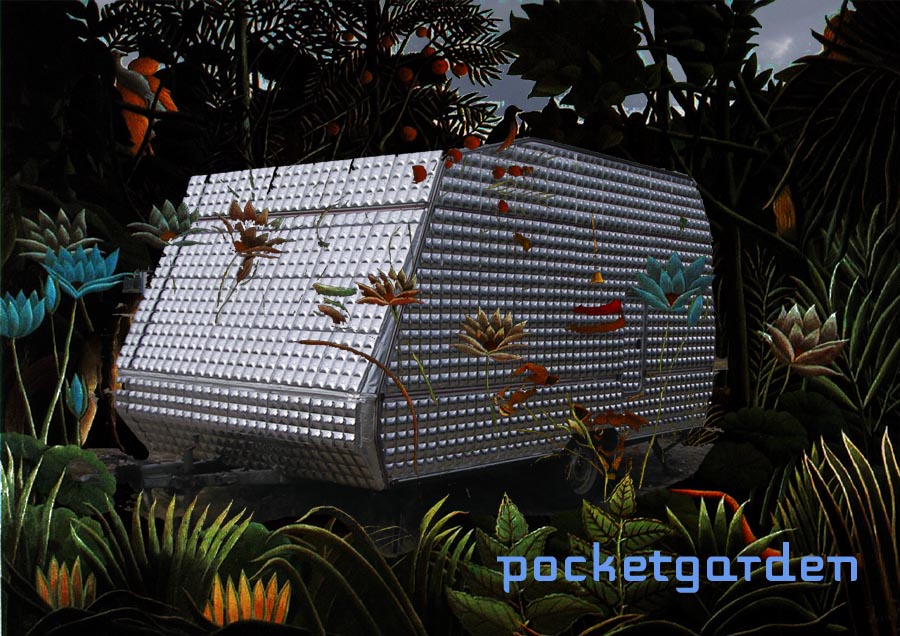
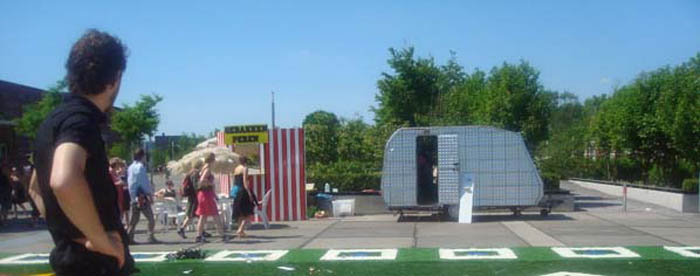

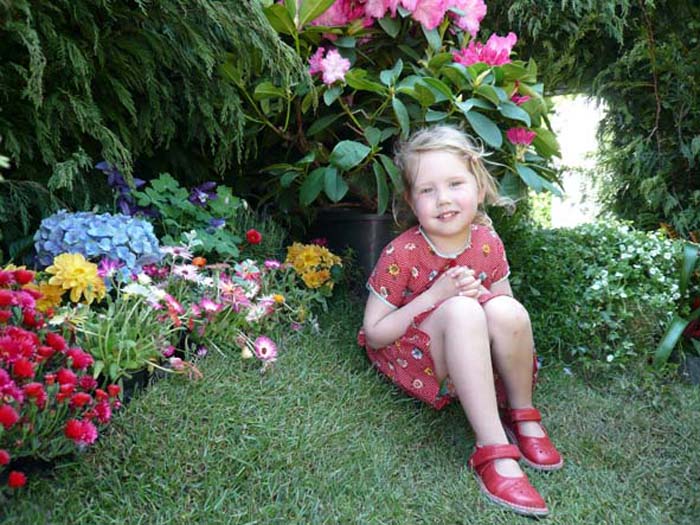
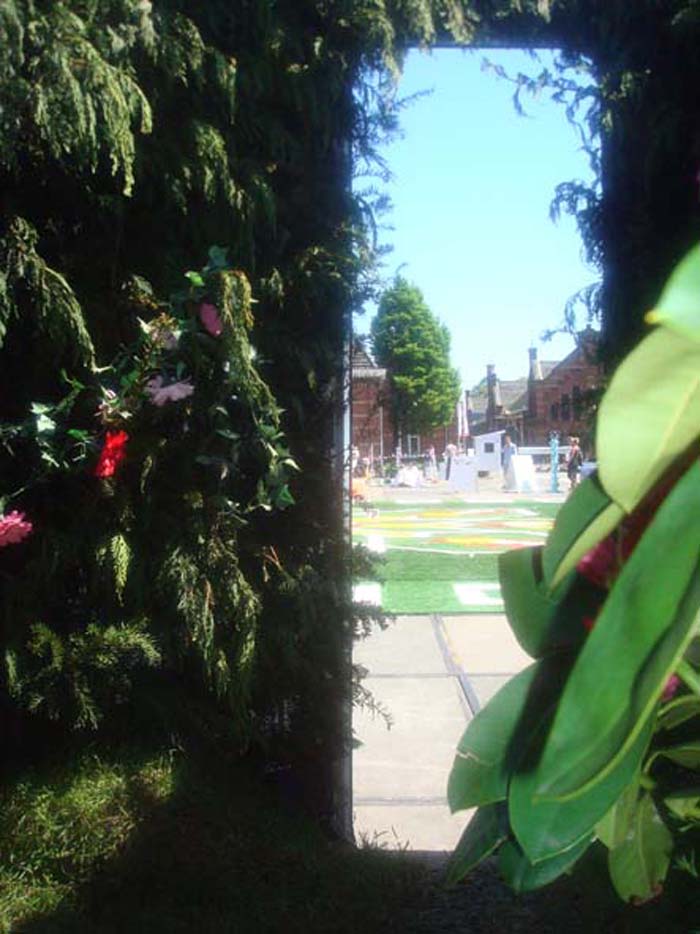

 Social media is hot. Twitter, Facebook, Instagram… If you do it well you can present an entire new avatar of yourself on each one of them. But does it make the world more social?
In the Peephouses you can check out one’s profile through the camera’s en tv’s first. Like what you see ? You can directly meet ‘live’.
Peephouses was made in assignment of Pluk de Nacht 2010, Outdoor filmfestival on the pear in ‘het IJ’, Amsterdam.
Twelve wooden boxes are grouping together like the buildings of a small town. In six of them there are large looking holes. If you peek in them you will see somebody’s face really close by. Is this me? you wonder. Is this being filmed?
But soon enough you will find out that it is live and that face, might be the person standing next to you peeking in that other hole!
Social media is hot. Twitter, Facebook, Instagram… If you do it well you can present an entire new avatar of yourself on each one of them. But does it make the world more social?
In the Peephouses you can check out one’s profile through the camera’s en tv’s first. Like what you see ? You can directly meet ‘live’.
Peephouses was made in assignment of Pluk de Nacht 2010, Outdoor filmfestival on the pear in ‘het IJ’, Amsterdam.
Twelve wooden boxes are grouping together like the buildings of a small town. In six of them there are large looking holes. If you peek in them you will see somebody’s face really close by. Is this me? you wonder. Is this being filmed?
But soon enough you will find out that it is live and that face, might be the person standing next to you peeking in that other hole!





 Makefactory organised a special series of workshops: kids from Wageningen worked together with kids living in the nearby asylum center. The series of seven workshops is designed by the kids themselves, in a ‘design’dinner at the asylum center.
Klik
Makefactory organised a special series of workshops: kids from Wageningen worked together with kids living in the nearby asylum center. The series of seven workshops is designed by the kids themselves, in a ‘design’dinner at the asylum center.
Klik 
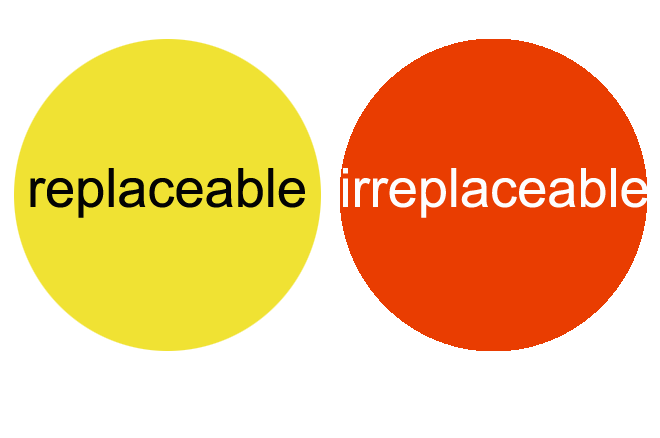 Replaceables is a campaigning project about the replaceability of workers. Someone I know worked at a big company. He told me he was at a meeting where a dozen of people would be told that they were to get fired. It was the third meeting like that in three years. In the three years he had worked there he had also outlived three bosses. At the meeting some people wore yellow badges and some wore red badges. The yellows were the replaceables and the red ones didn’t have much to fear, they were the irreplaceables. I was shocked when he told me this and asked him what color he had. He told me his team didn’t wear any colors and then he told me he made the whole story up to check if I was listening. It is not far besides the real world, though, and together we set up this campaign. We made the actual badges and had the workers choose what they would wear: red or yellow….?
Replaceables is a campaigning project about the replaceability of workers. Someone I know worked at a big company. He told me he was at a meeting where a dozen of people would be told that they were to get fired. It was the third meeting like that in three years. In the three years he had worked there he had also outlived three bosses. At the meeting some people wore yellow badges and some wore red badges. The yellows were the replaceables and the red ones didn’t have much to fear, they were the irreplaceables. I was shocked when he told me this and asked him what color he had. He told me his team didn’t wear any colors and then he told me he made the whole story up to check if I was listening. It is not far besides the real world, though, and together we set up this campaign. We made the actual badges and had the workers choose what they would wear: red or yellow….?
















